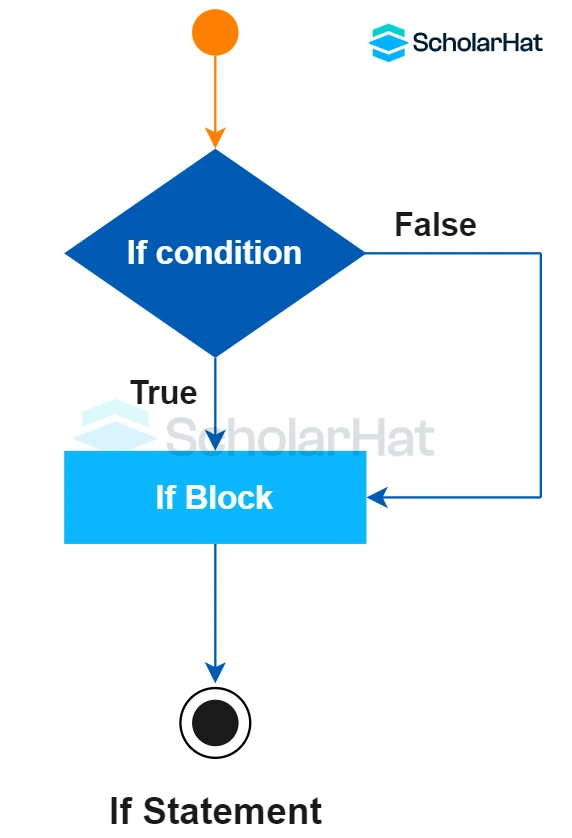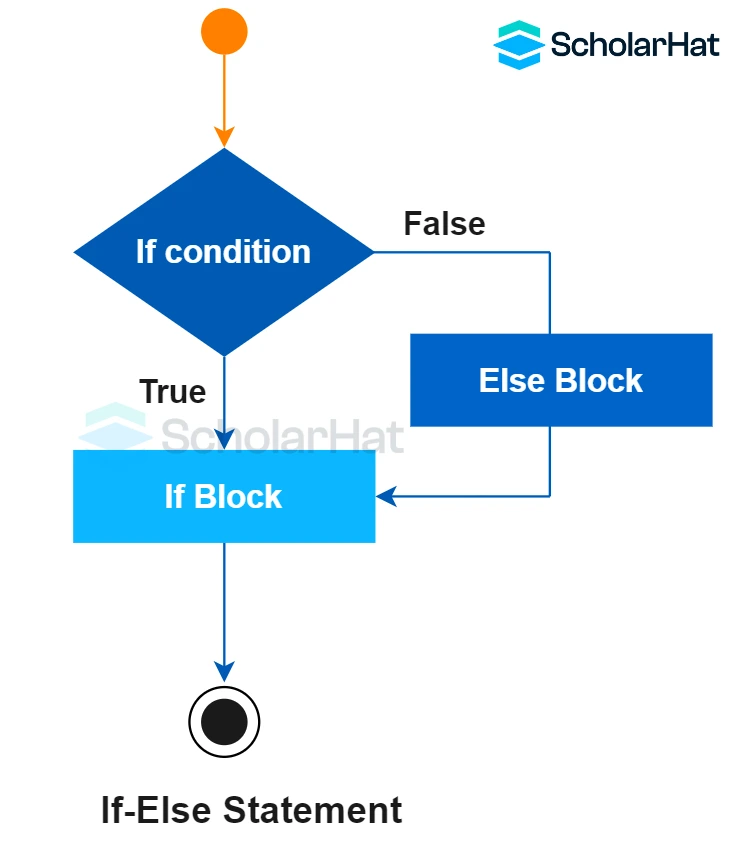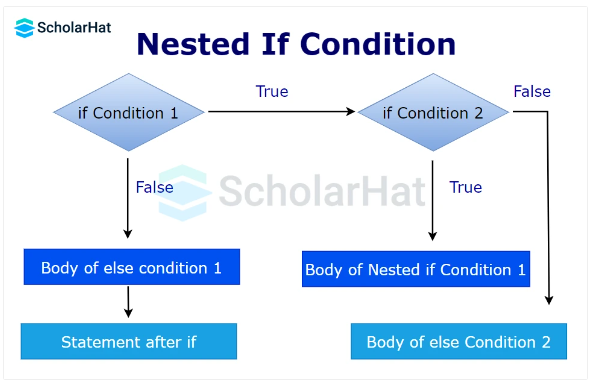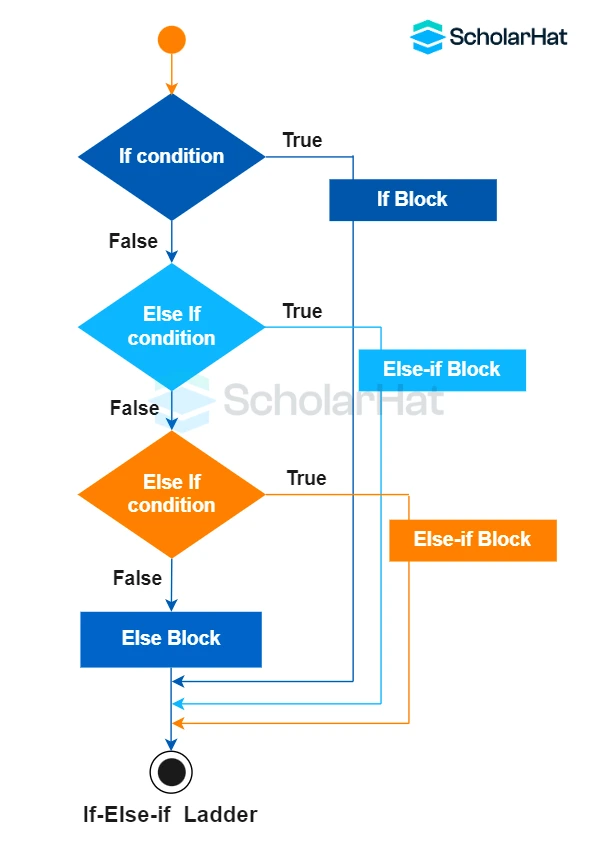Conditional structures in c++:
In C++, restrictive proclamations are control structures that let code simply decide. These assertions are otherwise called dynamic explanations. They are of the sort if articulation, if-else , if else-if stepping stool , switch , and so on. These assertions decide the progression of the program execution.
The progression of a program is overseen involving restrictive proclamations in C++. On the off chance that a condition is valid inside the if statement, the body of the assertion executes. If misleading, else is used to determine a substitute game-plan. You can check a few rules consecutively utilizing the else-if statement and gain C++ without any preparation. For multi-way spreading in view of the consequence of an articulation, utilize the switch proclamation. You can likewise check our C++ Confirmation Course for top to bottom information on C++.
Restrictive Explanations in C++ programming?
In C++, contingent proclamations are control structures that let code decide. These assertions are otherwise called dynamic proclamations. They are of the kind if proclamation, if-else, if else-if stepping stool, switch, and so forth. These assertions decide the progression of the program execution.
Kinds of Restrictive Proclamations in C++
In this article, we'll examine the main sort of contingent assertion for example if...else explanations in C++. We'll examine the switch proclamation in the following instructional exercise switch explanation in C++.
On the off chance that else is the primary sort of control explanation in C++. In this, the tasks are performed by some predefined condition. The assertions inside the body of the on the off chance that block get executed if and provided that the given condition is valid.
We have four variants of if-else statements in C++. They are:
ifstatement in C++if-elsestatement in C++if else-if ladderin C++nested ifstatement in C++
- if statement in C++
if statements in C++ are one of the most simple statements for deciding in a program. When you want to print any code only upon the satisfaction of a given condition, go with the simple if statement.
go with the simple if statement.

Syntax
if(testcondition)
{
// Statements to execute if
// condition is true
}
- In the
ifstatement, the test condition is in(). - If the
testconditionbecomestrue, the body of theifblock executes else no statement of theifblock gets printed.
Example
// C++ program to understand if statement
#include <iostream>
using namespace std;
int main()
{
int i = 11;
if (i > 15)
{
cout << "11 is greater than 15";
}
cout << "I am Not in if";
return 0;
}This C++ code in C++ Compiler initializes the integer ito 11 and then checks to see if it is greater than 15 using an ifstatement. It outputs "I am Not in if" to the console because 11 is not greater than 15.
Output
I am Not in if
- if-else statement in C++
It is an extension of the if statement. Here, there is an if block and an else block. When one wants to print output for both cases - true and false, use the if-else statement.

Syntax
if (testcondition)
{
// Executes this block if
// condition is true
}
else
{
// Executes this block if
// condition is false
}Example
// C++ program to understand the if-else statement
#include <iostream>
using namespace std;
int main()
{
int A = 16;
if (A < 15)
cout << "A is smaller than 15";
else
cout << "A is greater than 15";
return 0;
}
This C++ program initializes the integer variable Ato 16 and then checks to see if it is less than 15 using the if-elsestatement. It outputs "A is greater than 15" to the console because it isn't.
Output
A is greater than 15
- nested if statement in C++
We can include an if-else block in the body of another if-else block. This becomes a nested if-else statement.
click to study : nested loop in c++
click to study nested loop patterns

Syntax
if(test condition1)
{ //if condition1 becomes true
if(test condition1.1)
{
//code executes if both condition1 and condition 1.1 becomes true
}
else
{
//code executes if condition1 is true but condition 1.1 is false
}
}
else
{
//code executes if condition1 becomes false
}
Example
// C++ program to understand nested-if statement
#include <iostream>
using namespace std;
int main() {
int a = 10;
int b = 5;
if (a > b) {
// Control goes to the nested if
if (a % 2 == 0) {
cout << a << " is even";
}
else {
cout << a << " is odd";
}
}
else {
cout << a << " is not greater than " << b;
}
return 0;
}
- In the above code in C++ Editor, the first
ifstatement checks whethera>b. - If
ais greater thanb, thenested ifstatement is checked. - If the
nested ifcondition isfalse, theelsestatement in thenested ifblock gets executed. - If the first
ifstatement evaluates tofalse, thenested ifblock gets skipped and theelseblock executes.
Output
10 is even
- if else-if ladder in C++
It is an extension of the if-else statement. If we want to check multiple conditions if the first ifcondition becomes false, use the if else-if ladder. If all the if conditions become false the else block gets executed.

Syntax
if (testcondition1)
statement;
else if (testcondition2)
statement;
.
.
else
statement;Example
// C++ program to understand if-else-if ladder
#include <iostream>
using namespace std;
int main()
{
int A = 20;
if (A == 10)
cout << "A is 10";
else if (A == 15)
cout << "A is 15";
else if (A == 20)
cout << "A is 20";
else
cout << "A is not present";
return 0;
}The if else-if ladder is shown in this section of C++ code. It sequentially compares the value of A to several conditions. It outputs "A is 20"as the condition matched and comes out of the ladder.
Output
A is 20



.png)
No comments:
Post a Comment